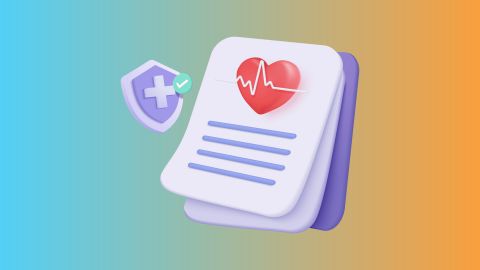This guide provides a comprehensive overview of insulin pumps — what they are, how they function, and the various types available. It outlines who can benefit from using them, key advantages, possible drawbacks, pricing factors, and essential safety tips. Readers will gain practical insights into pump features, usage, troubleshooting, and selection, empowering them to make informed choices for effective diabetes management.
What is an insulin pump?
An insulin pump is a compact, wearable device designed to deliver insulin both continuously and in controlled bursts, helping individuals with diabetes effectively manage their blood glucose levels. It connects to a thin plastic tube (catheter) placed beneath the skin and is programmed to release a steady background dose of insulin (basal) along with additional doses (bolus) when required. This provides a convenient and efficient alternative to multiple daily insulin injections using syringes or pens.
Types of insulin pumps
There are two primary types of insulin pumps — tubed and tubeless — each designed to deliver insulin efficiently while offering flexibility and convenience for people with diabetes.
1. Tubed insulin pumps: Tubed insulin pumps also known as tethered pumps, use a long, thin tube that connects the pump to a small cannula inserted under the skin. The pump itself is a compact device made of durable plastic or metal, containing a digital screen for control, a replaceable or rechargeable battery, and a cartridge (reservoir) filled with insulin for two to three days of use. The tubing links the reservoir to an infusion set attached to the skin with adhesive, where the cannula delivers insulin into the body. The infusion site is typically placed on the abdomen, upper arm, hip, or thigh and must be replaced every few days. While some models are waterproof, users generally disconnect the pump while bathing or swimming.
2. Tubeless insulin pumps: Tubeless insulin pumps, or patch pumps, combine the insulin reservoir and cannula into a single adhesive pod placed directly on the skin. Controlled wirelessly through a handheld device, these pumps eliminate external tubing. Each pod is disposable and replaced every two to three days. Being waterproof, tubeless pumps allow users to shower and swim without removal, offering greater convenience and mobility.
Who can use insulin pumps?
Insulin pumps are suitable for a variety of individuals, including:
- Type 1 Diabetes Patients: Those requiring consistent insulin delivery throughout the day.
- Type 2 Diabetes Patients: Individuals needing intensive insulin therapy for better blood sugar management.
- Pregnant Women: Managing gestational diabetes with precision.
- Children and Adolescents: Ensuring accurate dosing to support growth and active lifestyles.
- Individuals Struggling with Injections: For those who find traditional insulin administration challenging or inconvenient.
These pumps are highly effective in improving overall diabetes management and enhancing the quality of life.
Who should avoid using an insulin pump?
Individuals who should avoid or may face higher risks when using an insulin pump include those with limited manual dexterity, severe skin allergies, certain psychiatric conditions, impaired consciousness, or critical illness. It is also unsuitable for people who are unwilling or unable to manage regular self-care and pump maintenance. Since the device continuously delivers insulin, any interruption, misuse, or malfunction can quickly result in severe hyperglycemia or diabetic ketoacidosis, making careful monitoring and responsible management essential.
How insulin pump works?
An insulin pump administers rapid-acting insulin through a small catheter placed beneath the skin, replicating the pancreas’s natural function by delivering a steady basal dose along with larger bolus doses for meals or elevated blood sugar levels. The device is customized to suit individual insulin requirements, and the infusion set — including the catheter and tubing — is typically replaced every two to three days to maintain accuracy and reduce infection risk. Many modern insulin pumps are integrated with continuous glucose monitors (CGMs), enabling automated insulin adjustments and providing users with improved precision, convenience, and flexibility in diabetes management..
Features of an insulin pump
Insulin pumps are equipped with a range of features to enhance usability and effectiveness:
- Customisable delivery rates: Adjust settings to match individual insulin requirements.
- Compact and lightweight design: Easy to wear and discreet to use.
- Alerts and alarms: Provide notifications for low insulin, blockages, or malfunctions.
- Integration with CGMs: Allows seamless tracking and management of glucose levels.
- Remote control capability: Operate the pump discreetly via a smartphone or remote device.
- Extended battery life: Ensures continuous operation without frequent recharging.
These features make insulin pumps a reliable tool for managing diabetes effectively.
Importance of insulin pumps
- More Stable Blood Sugar Control
Insulin pumps deliver precise doses of insulin throughout the day, helping minimize fluctuations and maintain steady blood sugar levels. This precision reduces the risk of both high and low glucose episodes. - Greater Flexibility with Meals and Activities
You can easily adjust insulin doses before meals or physical activity, allowing for a more flexible lifestyle than rigid injection schedules. This is particularly beneficial for people with varying daily routines. - Fewer Daily Injections
An insulin pump eliminates the need for multiple daily injections, offering a more convenient and comfortable way to manage diabetes. - Lower Risk of Long-Term Complications
By keeping blood glucose levels closer to normal, insulin pumps help reduce the risk of serious long-term complications such as kidney disease, nerve damage, vision problems, and heart conditions. - Ideal for Children and Active Individuals
Pumps adapt well to changing routines, making them highly suitable for children, athletes, and those with unpredictable schedules. - Integration with Continuous Glucose Monitors (CGMs)
Many advanced pumps connect with CGMs to automatically adjust insulin delivery. This smart technology closely mimics a healthy pancreas, reducing the need for constant manual monitoring and improving overall diabetes control.
Benefits of insulin pumps
For individuals with diabetes, an insulin pump is a wearable device that continuously delivers insulin, helping improve overall health management, provide greater lifestyle flexibility, and ensure more accurate dosing.
Improved Health Outcomes
- More stable blood sugar levels: Continuous delivery of rapid-acting insulin minimizes major glucose fluctuations.
- Reduced hypoglycemia: Consistent dosing and quick adjustment options help lower the risk of low blood sugar episodes.
- Automated control with CGM integration: Certain pumps sync with continuous glucose monitors to automatically adjust insulin levels and prevent hypoglycemia.
- Lower risk of long-term complications: Better blood sugar control supports the prevention of kidney, nerve, eye, and heart complications associated with diabetes.
Enhanced Lifestyle Flexibility
- Freedom with meals: Users can conveniently deliver bolus doses for snacks or main meals.
- Simpler exercise management: Temporary basal settings help avoid low blood sugar during physical activity.
- Fewer needle pricks: The infusion set is replaced every few days instead of multiple daily injections.
- Discreet and comfortable use: Compact and wearable, insulin pumps can be easily concealed under clothing for daily convenience.
Disadvantages of an insulin pump
Despite their advantages, insulin pumps come with certain drawbacks:
- High costs: Initial purchase and maintenance expenses can be significant.
- Learning curve: Requires time and effort to understand and operate the device effectively.
- Technical issues: Risk of malfunction or dislodgement, which may disrupt insulin delivery.
- Skin irritation: Cannula insertion may lead to redness or discomfort.
- Constant dependency: Users must wear the device almost continuously.
Understanding these disadvantages helps users make an informed decision.
Insulin pump price in India
| Brand | Type | Price Range (INR) |
| Medtronic MiniMed | Tubed | ₹1.5 lakh - ₹3 lakh |
| Accu-Chek Combo | Tubed | ₹1.2 lakh - ₹2.5 lakh |
| Omnipod | Tubeless | ₹2 lakh - ₹3.5 lakh |
| Tandem t:slim X2 | Closed-Loop | ₹3 lakh - ₹4 lakh |
Note: Prices vary based on features, accessories and companies.
Safety Tips for Proper Use
While insulin pumps offer great convenience, using them safely requires consistent monitoring and preparedness. Here are two essential steps:
1. Monitor blood sugar regularly
Frequent blood glucose checks, either manually or with a continuous glucose monitor (CGM), are crucial when using a pump. A sudden rise in glucose could indicate an issue with the pump or infusion set, meaning insulin is not being delivered. This can quickly lead to hyperglycaemia, and in serious cases, diabetic ketoacidosis (DKA). Since pump users do not have long-acting insulin in their system, any malfunction may cause blood sugars to rise faster than with traditional injections.
2. Keep a backup insulin plan
Always be prepared for pump failure. Keep injectable insulin, syringes, or an insulin pen readily available. If the pump stops working, insulin may need to be administered immediately. Make it a habit to check the pump daily, ensure the tubing is intact, the insulin reservoir is sufficiently filled, and the battery is charged. Regular checks help prevent sudden disruptions in insulin delivery.
Troubleshooting Common Insulin Pump Issues
Managing insulin pump problems—such as high blood sugar (hyperglycemia)—requires careful inspection and prompt action. Common causes include tubing blockages, air bubbles, empty reservoirs, kinked or dislodged infusion sets, or incorrect pump settings. Always monitor ketone levels, review pump settings, and examine all components. If problems persist, refer to your user manual or contact your healthcare provider.
Common Issues & Solutions
1. High Blood Sugar (Hyperglycemia)
- Check for blockages in the tubing or cannula and ensure it’s securely in place.
- Look for air bubbles and prime the tubing if necessary.
- Verify that the insulin reservoir is filled with non-expired insulin.
- Confirm that basal and bolus settings are correct.
- Inspect the infusion site for redness, irritation, or signs of poor absorption.
Action: Replace the infusion set or reservoir, check ketones, and monitor blood glucose closely.
2. Leaking Pump or Reservoir
- Examine for cracks, leaks, or improper seals.
- Avoid exposure to extreme temperatures that can damage the device.
3. Alarm Errors
- Follow the pump’s specific troubleshooting instructions in the manual.
- Recheck all components, including tubing, connections, and battery.
4. Infusion Set Problems
- Inspect for kinks, disconnection, blood inside the cannula, or bending of the cannula.
- Replace the infusion set if any issue is detected.
What to consider when choosing an insulin pump
When selecting an insulin pump, keep the following factors in mind:
- Compatibility: Ensure the pump integrates with your CGM and meets your medical needs.
- Ease of use: Opt for a model with simple controls and user-friendly features.
- Required features: Consider alarms, connectivity, and customisable delivery rates.
- Battery life: Long battery life ensures uninterrupted insulin delivery.
- Cost and financing: Evaluate the overall cost and explore financing options like medical equipment loans.
- Medical guidance: Seek advice from your healthcare provider to make an informed choice.
Conclusion
Insulin pumps offer life-changing benefits for managing diabetes. While the initial investment can be steep, the improved quality of life and health make it worthwhile. For those concerned about costs, consider financing options like a medical equipment loan , loan for professionals, doctor loans, or hospital loans from Bajaj Finance. With tailored plans, you can access the best insulin pump without financial stress. Take the first step towards better diabetes management today.




